7 wonders of india
 TajMahal
TajMahalTaj Mahal is a mausoleum located in Agra.
The Taj Mahal (also "the Taj") is considered the finest example of
Mughal architecture, a style that combines elements from
Persian, Turkish, Indian, and Islamic architectural styles.
The focus of the Taj Mahal is the white marble tomb, which stands on a square plinth consisting of a symmetrical building with an iwan, an arch-shaped doorway, topped by a large dome.
Was built by the Mughal emperor Shah Jahan (1628-1658), grandson of Akbar the great, in the memory of his queen
Arjumand Bano Begum, entitled ‘Mumtaz Mahal’.
The plinth and tomb took roughly 12 years to complete. The
remaining parts of the complex took an additional 10 years and
were completed in order of minarets, mosque and jawab and
gateway.
A labour force of twenty thousand workers was recruited across northern India.
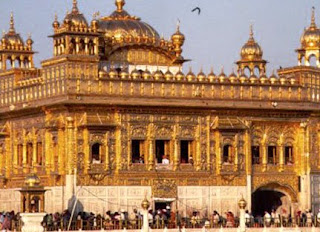 TheGolden Temple
TheGolden TempleThe Golden Temple is located in Amritsar, Punjab.
The door panes are decorated with artistic style. It opens on to
the bridge that leads to the main building of Sri Harmandir
Sahib. It is 202 feet in length and 21 feet in width.
Its architecture represents a unique harmony between the
Muslims and the Hindu architecture.
The fourth Guru of Sikhism, [Guru Ram Das], excavated a tank
in 1577 which subsequently became known as Amritsar
(meaning: Pool of the Nectar of Immortality), giving its name to
the city that grew around it.
In due course, a Sikh edifice, Harmandir Sahib ( Temple of
God), was constructed in the middle of this tank which became the supreme centre of Sikhism.
The Golden Temple or Darbar Sahib, is the most sacred temple
for Sikhs. It is a symbol of the magnificence and strength of the
Sikh people all over the world.
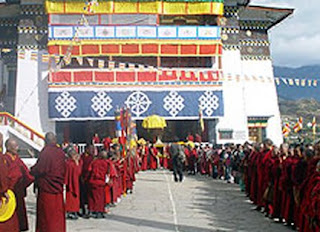 Tawang Monastery
Tawang MonasteryLocated at an elevation of 10,000 feet in Tawang Town in Arunachal Pradesh.
The assembly hall has a 8.3 m high Golden Buddha statue.
Is 3 storeys high, occupies an area of 140 sq mt and houses 65 residential buildings.
The kakaling (entrance gate) is a large hut shaped structure made of stone.
Founded by Merak Lama Lodre Gyatso in 1681
Is of the Gelugpa sect of Buddhist.
Is the largest centre for Buddhist cultural studies.
Is the largest Buddhist monastery in India.
Houses the Parkhang Library containing 400 year old Kangyur
manuscripts.
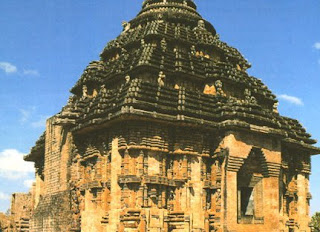 SunTemple-Konark
SunTemple-KonarkSituated at a distance from the famous religious and tourist centre of Puri (35 Km.) and the capital city of Bhubaneswar (65 Km).
The entire temple was designed in the shape of a colossal
chariot with seven horses and twenty four wheels, each about 10 feet in diameter, with a set of spokes and elaborate carvings.
It was built in red sandstone (Khandolite) and black granite.
The Sun Temple of Konark marks the highest point of achievement of Kalinga architecture depicting the grace, the joy and the rhythm of
life all in its wondrous variety.
It was built by King Raja Narasimhadeva-I of the Eastern Ganga Dynasty in the thirteenth century.
It is a temple to Surya, the sun God.
The Sun temple has been declared a world heritage site by UNESCO.
 Khajuraho
KhajurahoKhajuraho is a village in Madhya Pradesh, located in Chhatarpur District, about 620 kilometers southeast of Delhi.
The Khajuraho temples adhere to a northern Indian shikhara
temple style and often to a Panchayatana plan or layout.
Kandariya Mahadeva, comprises eighty-four shikharas, the
main being 116 feet from the ground level.
The Khajuraho temples were built over a span of a hundred
years, from 950A.D. to 1050A.D. They were rediscovered
during the late 19th century.
Khajuraho has the largest group of medieval Hindu and Jain
temples, famous for their everyday life sculpture.
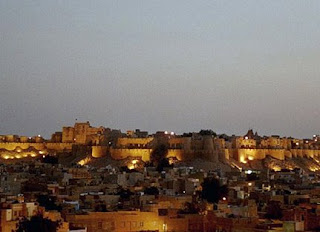 Jaisalmer Fort
Jaisalmer FortIt is situated in Jaisalmer city in Rajasthan.
The fort stands admist the golden stretches of the great Thar Desert, on Trikuta Hill and had been the scene of many battles.
It is also known as the "Golden Fort".
It is built of sandstone and is one of the largest forts in Rajasthan.
It was built in 1156 AD by the Bhati Rajput ruler Rawal Jaisal, from where it derives it name.
At one point of time the entire population of Jaisalmer used to live within the fort; but with the increase in the population, people was forced to move out and find shelter under the foot of the Trikuta Hill.
The main attractions inside the fort are: Raj Mahal (Royal palace), Jain temples, Laxminath temple, 4 massive gateways, Merchant Havelis.
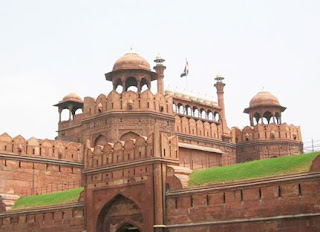 Red-Fort
Red-FortLocated in Chandni Chowk, Delhi.
Thick red sandstone walls, bulging with turrets and bastions, have withstood the vagaries of time and nature.
The wall is 2.5 km long and the height varies from 16 meters on the river side to 33 meters towards the city.
Diwan-e-am is the large pavilion which was used for public imperial audiences.
Diwan-e-khas is the decorated hall which was used for ministerial and court gatherings.
The Red Fort and the city of Shahjahanabad was constructed by the Emperor Shah Jahan in 1639 A.D.
Every year on Independence Day (15th August) the Prime Minister
of India hoists the national flag and addresses the nation, from the ramparts of Red fort.
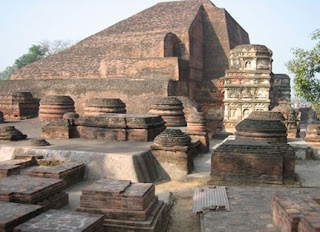 Nalanda-University
Nalanda-UniversityLocated 55 miles from Patna in Bihar.
Nalanda was the largest residential centre of learning in the world with a 9 storied library.
The monasteries are built in old Kushan architectural style, in a row of cells around a courtyard.
It was the Buddhist center of learning from 427 to 1197 CE partly under the Pala Empire.
It is believed that Buddha visited Nalanda during his last tour through Magadha, and it was there that Sariputta uttered his lion`s roar, affirming his faith in the Buddha.
University of Nalanda was established in 450 CE under the patronage of the Gupta emperors, notably Kumara Gupta.
Nava Nalanda Mahavihara is devoted to the study and research in Pali Literature and Buddhism.
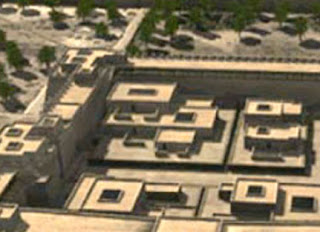 Dholavira Site
Dholavira SiteLocated in Kutch district
All its buildings are almost exclusively built out of brick.
The ancient site at Dholavira, is flanked by two storm water channels; the Mansar in the north, and the Manhar in the south.
Reservoirs are cut through stones vertically. They are about 7 meter deep and 79 meter long.
The site was occupied from about 2900 BC for about a millennium, declining slowly after about 2100 BC, briefly abandoned and then reoccupied, finally by villagers among its ruins, until about 1450.
A sign board with ten huge Indus signs found on the floor of a room at the North Gate was probably originally displayed above the gateway.
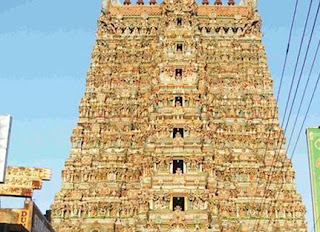 Meenakshi Temple
Meenakshi TempleLocated in the second largest city of Tamil Nadu i.e Madurai.
The temple complex is within a high-walled enclosure, at the core of which are the two sanctums for Meenakshi and Sundareshwara, surrounded by a number of smaller shrines and grand pillared halls.
The original temple was built by Kulasekara Pandya, but the credit for making the temple as splendid as it is today goes to the Nayaks.
The Nayaks ruled Madurai from the 16th to the 18th century and left a majestic imprint of their rule in the Meenakshi - Sundareswarar Temple.
The enormous temple complex is dedicated to Shiva, known as
Sundareshvara and his consort Parvatior Meenakshi.
According to legend Madurai is the actual site where the wedding between Shiva and Meenakshi took place.
Their soaring towers rise from solid granite bases, and are covered with stucco figures of deities, mythical animals and monsters painted in vivid colours.

Comments
Post a Comment